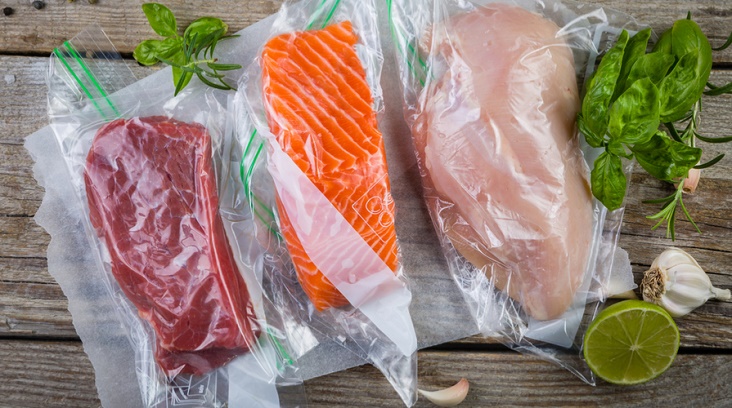Vacuum sealers were first introduced in the 1940’s by food packaging companies as an efficient way to save money. The technique prolonged the shelf life of food products and prevented spoilage, especially for products that were transported over long distances. Not only did vacuum sealers hinder the growth of mould and bacteria, but they also prevented freezer burns and kept food fresh.
Nowadays, however, vacuum sealers aren’t used for commercial purposes exclusively, as they’re quite affordable and make one of the most useful home gadgets you can have. They help you preserve food by inhibiting the growth of spoilage bacteria such as thermophiles, mesophiles and psychrophiles, fungus, and mould. When bacteria reproduce, they break down organic enzymes and iron-containing pigments in protein. As a result, they leave behind sulfides, amines, ammonia and organic acid buildup that causes rancid odours, slimy residues, and discolouration.

This not only ruins the texture, appearance and, most importantly, the taste of food, but it can also cause serious illnesses if eaten. Fortunately for us, all of the aforementioned bacteria are obligate, meaning they need oxygen to metabolise and reproduce. And guess what the main purpose of vacuum sealing is? That’s right – oxygen deprivation, which completely stops their growth cycle. Oxygen deprivation has the same effect on fungal spores and mould – without it, they can’t grow and consume your food for you.
However, just because your food is sealed it doesn’t mean it’s completely protected from bacteria. There are also bacteria that thrive without oxygen. This is why you should always refrigerate your food after you seal it if you don’t plan on eating it soon after you’ve vacuumed it. Always keep food at 0 Celsius degrees, which is the temperature at which bacteria growth is completely frozen. If you vacuum and store your food properly, the vacuum sealer will pay for itself in no time, simply because you won’t throw as much food as you used to. The longevity of your food will increase three to five times.
The most popular types of vacuum sealers for home use are the handheld and countertop sealers. Whichever of these home gadgets you end up choosing, I bet you won’t regret the purchase. Handheld models are ideal if you don’t store a lot of food, while countertop models are typically larger and more expensive, but they can seal larger food items and more food overall. Countertop models come in various sizes and are able to vacuum seal a wide range of foods.